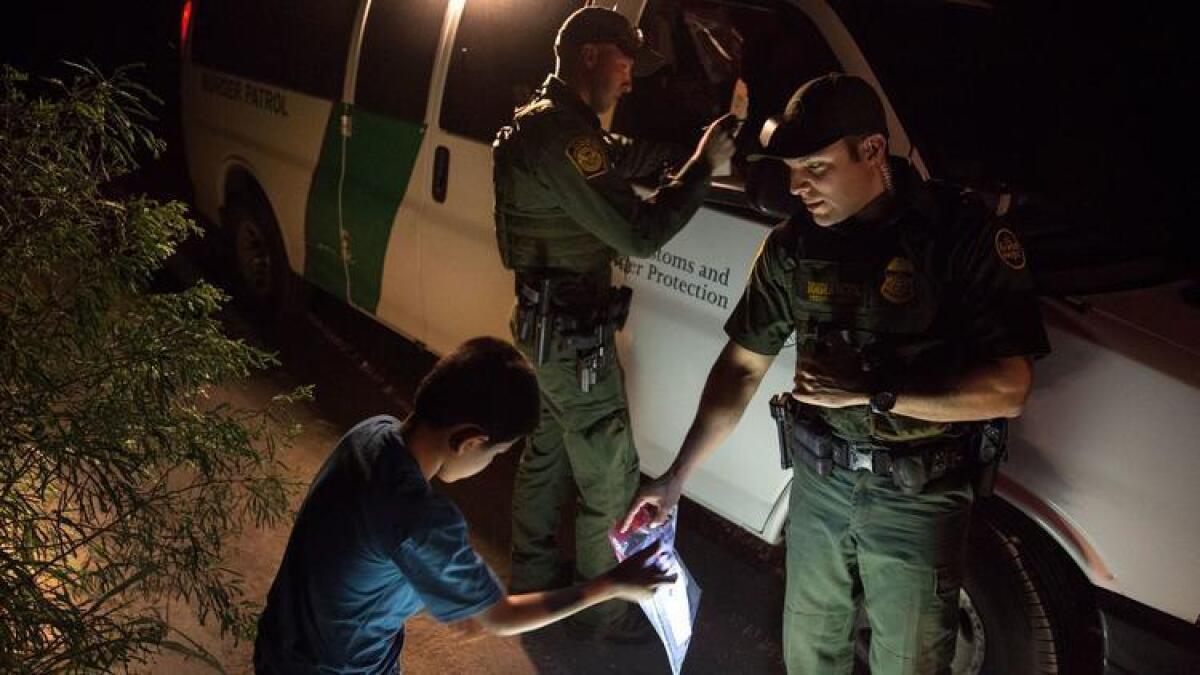Border Patrol losing agents faster than it can hire new ones

Two new reports from government watchdog agencies say the Border Patrol is losing agents faster than it can hire new ones, and that border and immigration enforcement agencies face “significant challenges” in hiring and training new personnel.
The reports from the inspector general for the Department of Homeland Security and the Government Accountability Office were released separately over the last week. Both highlight the difficulties that federal agencies have filling the ambitious hiring goals laid out by President Trump.
In a January executive order Trump called for hiring 5,000 more Border Patrol agents and 10,000 officers for Immigration and Customs Enforcement. Both agencies are key components of the administration’s crackdown on illegal immigration and desire to bulk up border security.
The GAO report examined how the Border Patrol deploys agents and the effectiveness of checkpoints it staffs. Auditors say the agency has fewer agents now than it is supposed to have under a 2011 congressional mandate, which required 21,370 agents.
But as of this May the agency had just 19,500, or 1,870 fewer than required.
Compounding the problem is that agents are leaving faster than they can be replaced. Auditors say that between 2013 and 2016 the Border Patrol hired an average of 523 agents each year — and saw an average of 904 leave.
Reasons include better pay at competing agencies, a hiring process that requires applicants to pass a polygraph exam (which other agencies don’t require) and assignments that often send new agents to remote locations along the border.
The audit also sheds new light on where immigrants without permission to enter are apprehended and where drug are seized.
Four in 10 apprehensions between 2012 and 2016 occurred within half a mile of the border.
However, between 64% and 70% of all drug seizures by the agencies occurred more than 10 miles from the border, where immigration officials operate a network of checkpoints.Only 11% of drug seizures occurred close to the border, and checkpoints account for less than 2% of apprehensions of unauthorized immigrants.
The checkpoints are controversial, with critics saying they are not effective, easily circumvented and violate constitutional rights.
The audit said that the effectiveness of these checkpoints can’t be resolved in large part because the agency still does not have good data collection practices. Auditors have urged better data collection as far back as 2009 but say there are still gaps in reporting that make analyzing the checkpoints’ effectiveness problematic.
The inspector general’s report examines the management challenges facing Homeland Security, which includes Customs and Border Protection, the Border Patrol and ICE, and says the agencies can’t yet justify hiring thousands more agents and officers.
“Neither CBP nor ICE could provide complete data to support the operational need or deployment strategies for the 15,000 additional agents and officers they were directed to hire,” the report said, adding that the agencies faced “notable difficulties” in making hires.
In a report one year ago the inspector general said that it took about nine months to hire a single Border Patrol agent and about seven months to hire an ICE officer.
The new report noted that while hiring times have improved there are still “significant delays.” It attributed those delays to not having enough hiring staff or the internal systems needed to hire staff efficiently.
Moran writes for the San Diego Union-Tribune.
More to Read
Start your day right
Sign up for Essential California for news, features and recommendations from the L.A. Times and beyond in your inbox six days a week.
You may occasionally receive promotional content from the Los Angeles Times.






